BLIND VAYSHA – VR
Théodore Ushev
2017
| 8 min 13 s
Technique: VIRTUAL REALITY ANIMATION (Samsung Gear)
VIRTUAL REALITY ANIMATION
Based on the film Nominated for BEST ANIMATED SHORT FILM
89th ACADEMY AWARDS®
Selections and Awards
Based on the short story “Blind Vaysha” by Georgi Gospodinov
© Georgi Gospodinov, 2001
BLIND VAYSHA: FROM FILM TO VIRTUAL REALITY
Vaysha is not like other little girls: she was born with a left eye that sees only the past and a right eye that sees only the future, and she cannot live in the present. Should she poke out one of her eyes so that she can live in the other’s temporal reality? Or is she doomed to perceive the world from this perplexing perspective?
Blind Vaysha is an expressionistic work that’s been created in three distinct versions: 2D, stereoscopic 3D and virtual reality (VR). Director Theodore Ushev embraced VR for one simple reason: to allow viewers to have a more visceral connection with his heroine. He uses this immersive technology to serve the purposes of narrative, not visual spectacle, and to make the central metaphor of his story, which is steeped in Buddhist wisdom, that much more compelling.
Each of these versions uses the same animation method: the traditional art of linocutting recreated on a graphics tablet, a popular tool for today’s animators. The result is a fascinating encounter between artistic tradition and cutting-edge technology—an apt way of perpetuating an exquisite, centuries-old form of visual art.
Vaysha is not like other young girls: she was born with one green eye and one brown eye. But her unmatched eyes aren’t all that’s special about her gaze: her left eye sees only the past, and her right eye only the future. Like a terrible curse, Vaysha’s split vision prevents her from living in the present. Blinded by what was and tormented by what will be, she remains trapped between two irreconcilable temporalities. “Blind Vaysha”—that’s what everyone calls her.
Directed by renowned filmmaker and animator Theodore Ushev, Blind Vaysha is adapted from a philosophical short story by Georgi Gospodinov, a leading multidisciplinary author from the younger generation of Bulgarian writers. Using an expressive, powerful style poised midway between religious paintings and linocuts, Ushev reaffirms his virtuosity in visual experimentation, creating a film that is both symbolic and accessible, featuring bucolic European landscapes and Benedictine architecture.
Brilliantly narrated by actress Caroline Dhavernas, Blind Vaysha uses wisdom and humour to tell its metaphorical tale about the difficulty of living in the here and now. Available in 2D and stereoscopic 3D, Blind Vaysha will soon be released in a VR version that allows viewers to forge an immediate and visceral connection with its protagonist.
TECHNICAL CHALLENGES
Blind Vaysha takes an unusual approach to virtual reality (VR). Normally, VR requires the use either of several cameras or of one 360-degree camera to reconstruct an immersive environment. In Blind Vaysha, filmmaker Theodore Ushev instead opted for the two cameras of traditional stereoscopy, adapting them adroitly to his purposes.
In order to create a stereoscopic image of a scene, it must be shot twice, from two slightly different positions separated by a distance equivalent to the distance between the eyes. When the two images are then projected onto a screen, the viewer must wear special glasses equipped with polarizing filters that fuse the two images into one and create the illusion of depth.
That is the traditional process that Ushev used for the stereoscopic 3D version of Blind Vaysha. But in the VR version, the VR-headset wearer momentarily experiences a visual disorder, because the two recorded images do not always merge into a single, unified whole. In fact, each eye sees a different image. Ushev does this to fully immerse his audience in Vaysha’s experience in the sequences shot from her subjective viewpoint, in which one eye sees only the past and the other only the future. This confusing perspective enables audiences not only to identify strongly with the protagonist but also to have a physical and visceral experience, disrupting their passive, comfortable view of the world.
Trailer
Team
Theodore Ushev
Director
Photo
Marc Bertrand
Producer (NFB)
Photo
Photo : NFB
Julie Roy
Executive Producer (NFB)
Photo
Photo : NFB
Images
Loading...
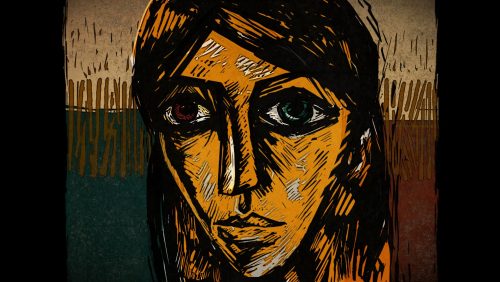
Download
Loading...
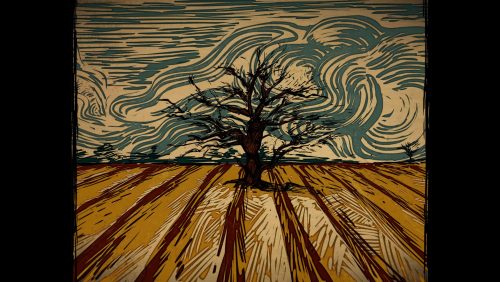
Download
Loading...
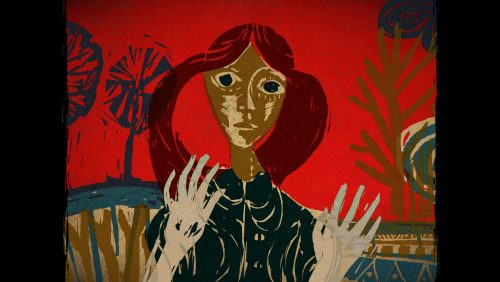
Download
Loading...
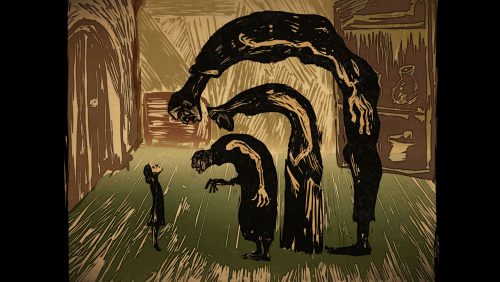
Download
Loading...

Download
Loading...
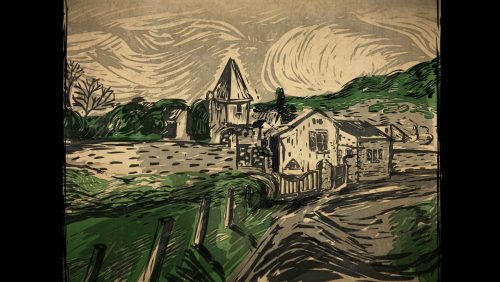
Download
Loading...
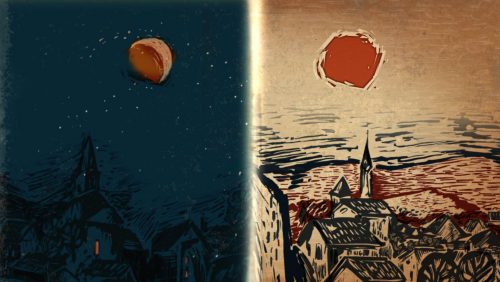
Download
Loading...
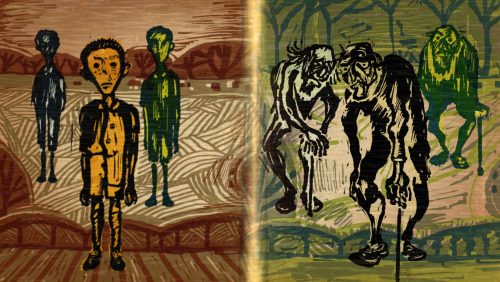
Download
Loading...
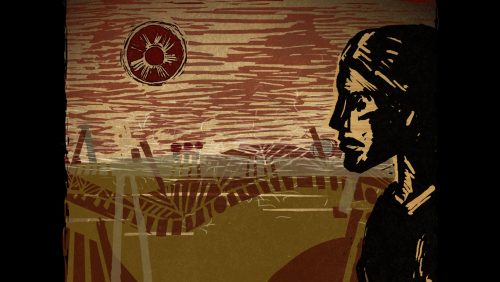
Download
Loading...
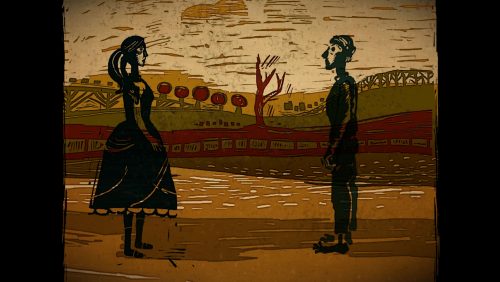
Download
Loading...
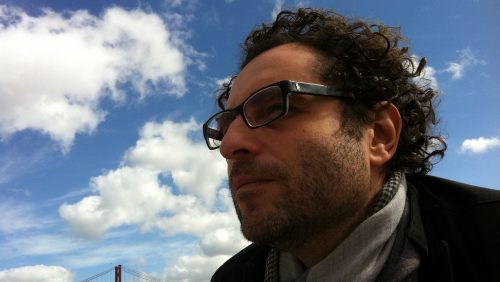 Photo: Dessislava Bineva
Photo: Dessislava Bineva
Download
Loading...
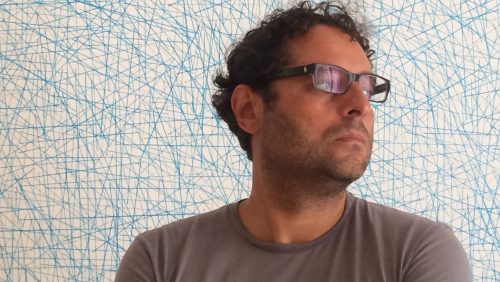 Photo: Dessislava Bineva
Photo: Dessislava Bineva
Download
Credits
A film by
Theodore Ushev
Based on the short story “Blind Vaysha” by Georgi Gospodinov
© Georgi Gospodinov, 2001
Voice
Caroline Dhavernas
Voice Direction
Julie Burroughs
Sound Design
Olivier Calvert
Foley
Lise Wedlock
Foley Recording
Geoffrey Mitchell
Re-recording
Serge Boivin
Music
Mandra
Composed by Nikola Gruev
Performed by Kottarashky
From the album Opa Hey!
Published by Asphalt Tango Records 2009
Music for the funeral of Queen Mary, Z. 860
Burial Service March
By Henry Purcell
Performed by Oxford Camerata
Courtesy of Naxos of America
Technical Director
Pierre Plouffe
Technical Coordinator
Daniel Lord
Production Coordinator
Michèle Labelle
Online Editor
Serge Verreault
Marketing Manager
Geneviève Bérard
Administrator
Diane Régimbald
Administrative Team
Diane Ayotte
Karine Desmeules
Thanks to
Mélanie Gleize
Olivier Catherin
This project was developed with the support of the Odyssée Artist-in-Residency program of the Abbey of Fontevraud – ACCR, with additional support from the Ministry of culture and communication and the Pays de la Loire Region.
With the participation of ARTE France
Cinema Department
Short Film Program Manager: Hélène Vayssières
Executive Producer
Julie Roy
Producer
Marc Bertrand
French Program
French Animation studio

Media Relations
-
About the NFB
The National Film Board of Canada (NFB) is a leader in exploring animation as an artform, a storytelling medium and innovative content for emerging platforms. It produces trailblazing animated works both in its Montreal studios and across the country, and it works with many of the world’s leading creators on international co-productions. NFB productions have won more than 7,000 awards, including seven Oscars for NFB animation and seven grand prizes at the Annecy festival. To access this unique content, visit NFB.ca.